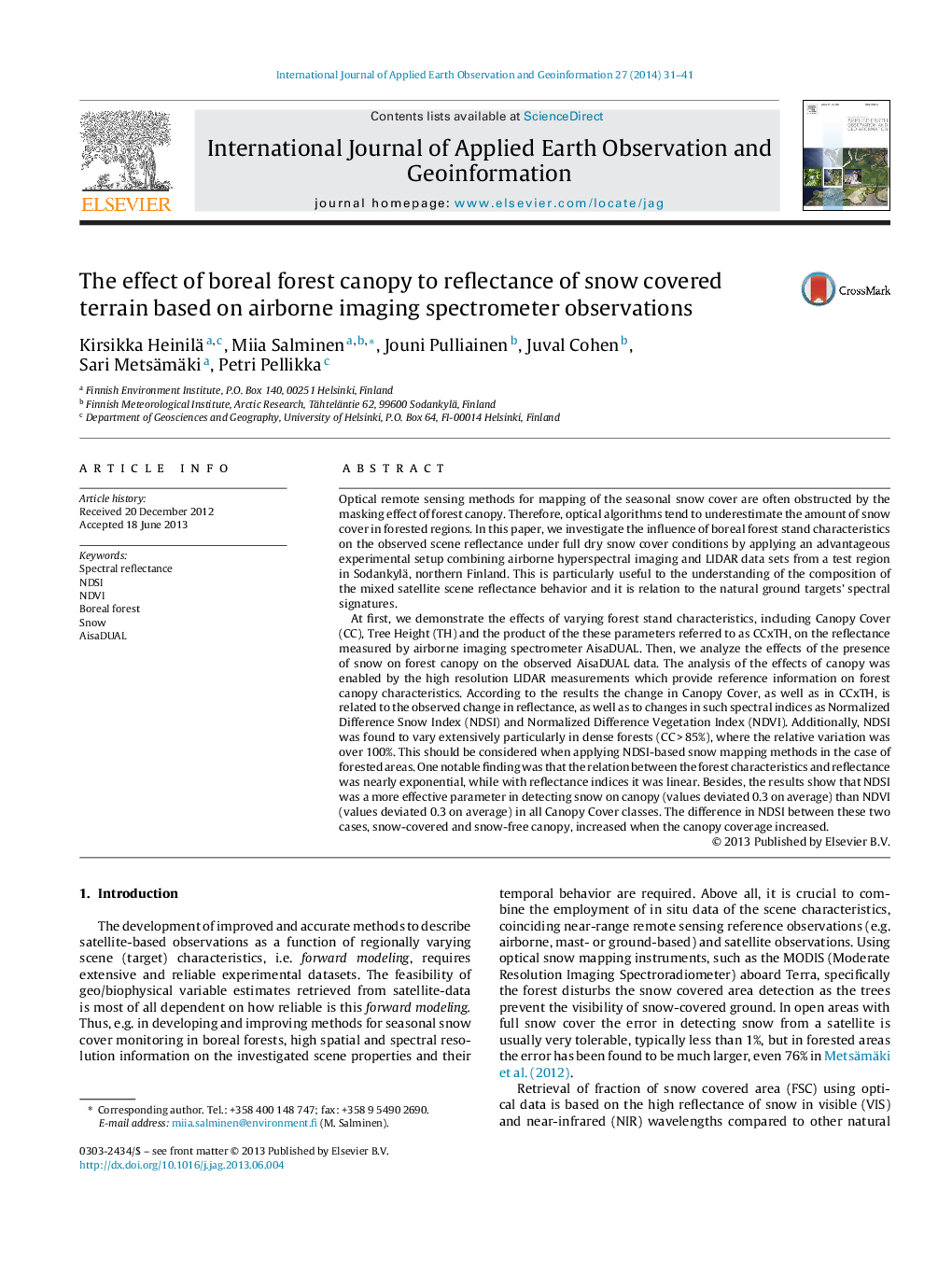| کد مقاله | کد نشریه | سال انتشار | مقاله انگلیسی | نسخه تمام متن |
|---|---|---|---|---|
| 4464807 | 1621833 | 2014 | 11 صفحه PDF | دانلود رایگان |
• Canopy characteristics affect considerably the spectral observations of snow covered terrain.
• Relation between the canopy characteristics and reflectance was nearly exponential.
• Relative variation in NDSI was large (>100%) in dense forests (Canopy Cover 85%).
• NDSI was a more effective parameter in detecting canopy snow (values deviated 0.3 on average) than NDVI (values deviated 0.1 on average).
Optical remote sensing methods for mapping of the seasonal snow cover are often obstructed by the masking effect of forest canopy. Therefore, optical algorithms tend to underestimate the amount of snow cover in forested regions. In this paper, we investigate the influence of boreal forest stand characteristics on the observed scene reflectance under full dry snow cover conditions by applying an advantageous experimental setup combining airborne hyperspectral imaging and LIDAR data sets from a test region in Sodankylä, northern Finland. This is particularly useful to the understanding of the composition of the mixed satellite scene reflectance behavior and it is relation to the natural ground targets’ spectral signatures.At first, we demonstrate the effects of varying forest stand characteristics, including Canopy Cover (CC), Tree Height (TH) and the product of the these parameters referred to as CCxTH, on the reflectance measured by airborne imaging spectrometer AisaDUAL. Then, we analyze the effects of the presence of snow on forest canopy on the observed AisaDUAL data. The analysis of the effects of canopy was enabled by the high resolution LIDAR measurements which provide reference information on forest canopy characteristics. According to the results the change in Canopy Cover, as well as in CCxTH, is related to the observed change in reflectance, as well as to changes in such spectral indices as Normalized Difference Snow Index (NDSI) and Normalized Difference Vegetation Index (NDVI). Additionally, NDSI was found to vary extensively particularly in dense forests (CC > 85%), where the relative variation was over 100%. This should be considered when applying NDSI-based snow mapping methods in the case of forested areas. One notable finding was that the relation between the forest characteristics and reflectance was nearly exponential, while with reflectance indices it was linear. Besides, the results show that NDSI was a more effective parameter in detecting snow on canopy (values deviated 0.3 on average) than NDVI (values deviated 0.3 on average) in all Canopy Cover classes. The difference in NDSI between these two cases, snow-covered and snow-free canopy, increased when the canopy coverage increased.
Journal: International Journal of Applied Earth Observation and Geoinformation - Volume 27, Part A, April 2014, Pages 31–41
